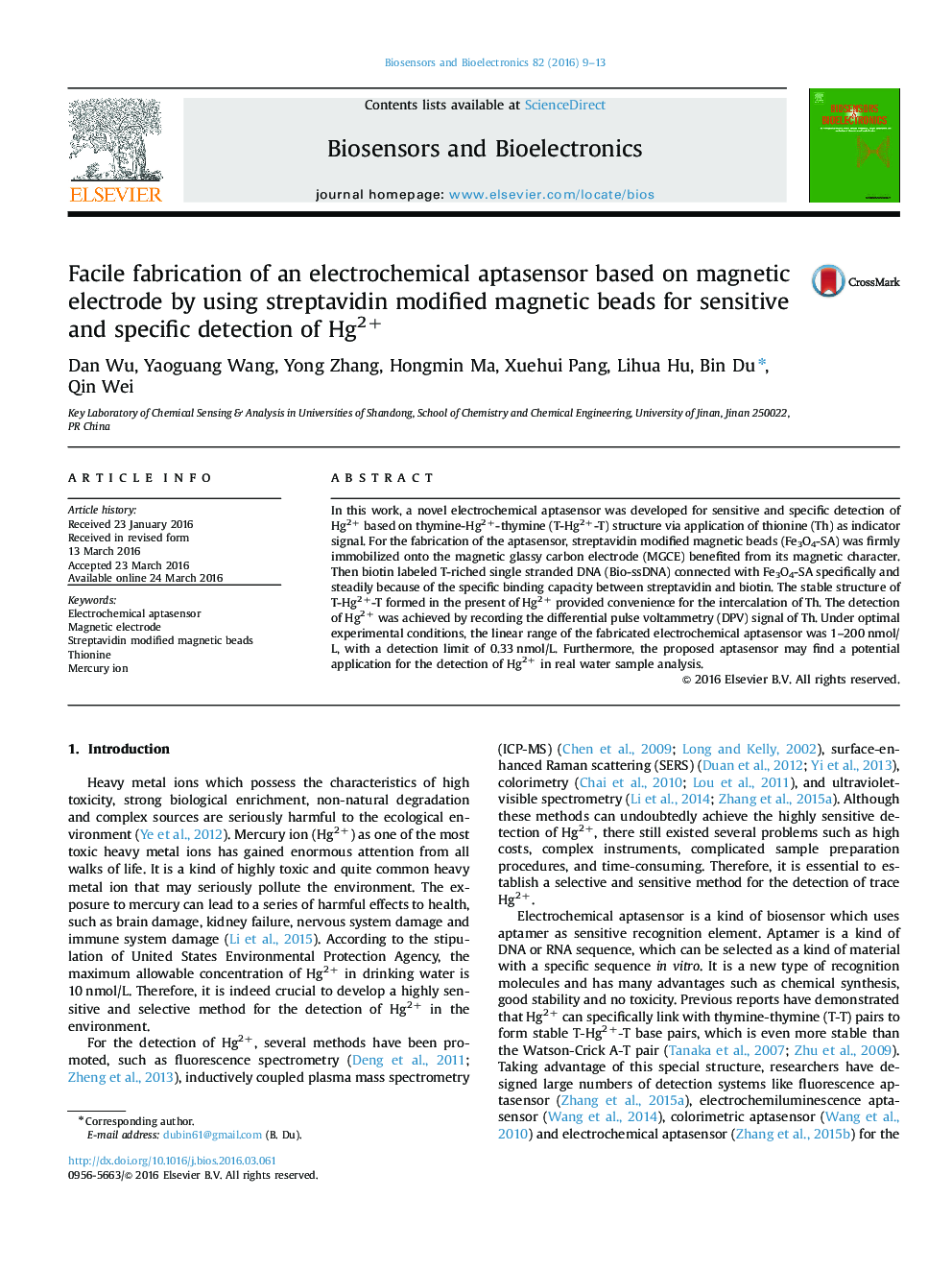| Article ID | Journal | Published Year | Pages | File Type |
|---|---|---|---|---|
| 866253 | Biosensors and Bioelectronics | 2016 | 5 Pages |
•A novel electrochemical aptasensor was developed for sensitively detecting Hg2+.•The magnetic property of Fe3O4-SA was applied to connect well with MGCE.•Thionine was employed as signal indication for quantitative detection of Hg2+.•The aptasensor displayed low detection limit of 0.33 nmol/L for Hg2+.
In this work, a novel electrochemical aptasensor was developed for sensitive and specific detection of Hg2+ based on thymine-Hg2+-thymine (T-Hg2+-T) structure via application of thionine (Th) as indicator signal. For the fabrication of the aptasensor, streptavidin modified magnetic beads (Fe3O4-SA) was firmly immobilized onto the magnetic glassy carbon electrode (MGCE) benefited from its magnetic character. Then biotin labeled T-riched single stranded DNA (Bio-ssDNA) connected with Fe3O4-SA specifically and steadily because of the specific binding capacity between streptavidin and biotin. The stable structure of T-Hg2+-T formed in the present of Hg2+ provided convenience for the intercalation of Th. The detection of Hg2+ was achieved by recording the differential pulse voltammetry (DPV) signal of Th. Under optimal experimental conditions, the linear range of the fabricated electrochemical aptasensor was 1–200 nmol/L, with a detection limit of 0.33 nmol/L. Furthermore, the proposed aptasensor may find a potential application for the detection of Hg2+ in real water sample analysis.
